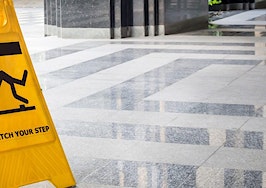- Fannie Mae and Freddie Mac's stockholders were back in court this week, insisting that Fannie/Freddie went through a sort of bankruptcy reorganization and are now repaired and profitable.
- Fannie’s last eight years have been weird. It has paid back all the bailout money. It has also shoveled all profits to the Treasury.
- Without those retained earnings, it is certain one day to need another bailout. We continue to transfer all of those earnings to the Treasury because of one oops-a-daisy in 2008: We neglected to wipe out Fannie’s stockholders, who are now trying to regain control.
Wall Street sharpies are trying to run off with Fannie Mae (and Freddie, too), a twist on politicos who would either shut it down, wish it would go away, or would drag off the old honey-pot for constituents. The companies’ stockholders were back in court this week, insisting that Fannie/Freddie went through a sort of bankruptcy reorganization and are now repaired and profitable. And, therefore, should be theirs to profit from once again.
I have some admiration for true financial buccaneers, the ones who take great risk for great reward. Think Geena Davis with a dagger in her teeth, swinging from a yardarm.
However, Wall Street has always included slippery crews, working angles and legalisms, risking little while taking pigeons, often from the public sector. The weasels of finance.
The beginnings of Fannie (and Freddie)
Begin at the beginning. Fannie was created during the Great Depression to help the supply of mortgage credit, and it did. Joined in 1971 by its Siamese twin, Freddie Mac (the two referred to here just as “Fannie”), their lives were uneventful clear up until 1980.
Along the way, other agencies assisted the post-war need for housing credit. The U.S. Department of Veterans Affairs (VA) began in 1944 to guarantee loans, and the Federal Housing Administration (FHA) to insure them.
In 1968, Ginnie Mae began the first modern MBS (mortgage-backed securities) market, but securitized only VA and FHA loans, which meant no credit risk to Ginnie.
Fannie was and is a hybrid: It has a for-fee securitization and guarantee business, profitable and low-risk, but also owned and owns a portfolio of loans. That was the road to perdition. Fannie’s portfolio was underwater versus sky-high interest rates in the early eighties, but that drowning receded.
However, survival encouraged sharpies to turn Fannie into an immense S&L (savings and loan), holding $1.7 trillion in loans and financing them with borrowed money. It guaranteed another $4 trillion in MBS (mortgage-backed securities), but the risk was in the financed portfolio.
Also the riches. Like a drunk who has inherited a fortune, Fannie was everybody’s best pal. Republicans loved the stock performance, Democrats loved the assistance programs for their constituents, and both really loved the political payola. And after near-death 1980-82, Fannie worked for another 25 years.
Enter 2008
One of the key moments in the 2008 disaster: as markets ran from all risk, at mid-summer that year, China told Secretary Paulson that without an overt U.S. guarantee, it would not roll over its investments in Fannie debt. We placed dead-broke Fannie in “conservatorship,” made Fannie issue warrants of ownership to the Treasury, which injected $187 billion, and eight years later, Fannie is still in business as-was, but a zombie.
[Tweet “Eight years later, Fannie is still in business as-was, but a zombie.”]
Political righties would shut Fannie in an instant, but even most of them know that there is no sufficient “private” source of mortgage credit. Democrats hate the place, too, because “bailouts” are today despised by all political wings.
A great fable lives on: that Fannie was the cause of the mortgage bubble. It was not — the bubble was the work of those right-wing-beloved free markets, which created a couple of trillion in utterly worthless non-Fannie loans and wrecked the families who signed onto them.
The last eight years
Fannie’s last eight years have been weird. It has paid back all the bailout money. It has also shoveled all profits to the Treasury. Without those retained earnings, it is certain one day to need another bailout.
We continue to transfer all of those earnings to the Treasury because of one oops-a-daisy in 2008: We neglected to wipe out Fannie’s stockholders.
They are still there. Back in court this week. They insist that since the pseudo “bankruptcy reorganization,” Fannie is now repaired and profitable, and should be given back to the stockholders. Who lifted not a nickel to preserve the place when dying.
Weasels.
The whole thing is a long lesson in “government sponsored enterprises” and our political foibles. Fannie’s mission and execution could not have been done by other means, or accomplished today — that’s why Fannie is still there.
But the bungling inside and out, and grabbing from all sides… a cautionary lesson in human nature.
We can dream big things and do big things, but we — all of us — are in the way of perfection.
Lou Barnes is a mortgage broker based in Boulder, Colorado. He can be reached at lbarnes@pmglending.com.





